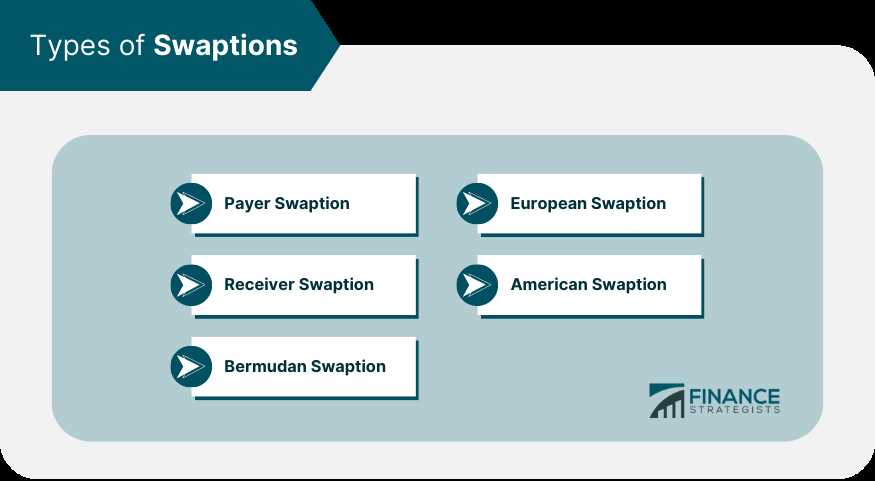Types and Styles of Swaptions
A swaption, or swap option, is a financial derivative that gives the holder the right, but not the obligation, to enter into a swap agreement. Swaptions are commonly used in the financial markets to manage interest rate risk and to speculate on future interest rate movements.
1. European Swaptions

A call swaption gives the holder the right to enter into a swap agreement where they receive fixed interest payments and pay floating interest payments. This is beneficial when the fixed interest rate is expected to be higher than the floating interest rate in the future.
A put swaption, on the other hand, gives the holder the right to enter into a swap agreement where they pay fixed interest payments and receive floating interest payments. This is advantageous when the fixed interest rate is expected to be lower than the floating interest rate in the future.
2. American Swaptions
American swaptions differ from European swaptions in that they can be exercised at any time before the exercise date. This flexibility allows the holder to take advantage of favorable interest rate movements before the exercise date. American swaptions can also be classified into call swaptions and put swaptions.
3. Bermudan Swaptions
These are the main types and styles of swaptions. Each type and style has its own advantages and disadvantages, and the choice of which swaption to use depends on the specific needs and objectives of the market participants.
Advanced Strategies and Instruments for Swaptions Trading
1. Callable Swaptions:
A callable swaption gives the buyer the right, but not the obligation, to terminate the underlying swap before its maturity date. This option is valuable to the buyer as it allows them to take advantage of favorable market conditions or changes in their financial situation. Callable swaptions are often used by issuers of fixed-rate bonds to hedge against rising interest rates.
2. Puttable Swaptions:
A puttable swaption gives the buyer the right, but not the obligation, to extend the underlying swap beyond its maturity date. This option is valuable to the buyer as it allows them to benefit from favorable market conditions or changes in their financial situation. Puttable swaptions are often used by issuers of floating-rate bonds to hedge against falling interest rates.
3. Collar Swaptions:
4. Spread Swaptions:
A spread swaption allows the buyer to enter into a swap with a spread between two different interest rate benchmarks. This strategy is often used by traders who want to take advantage of differences in interest rates between different markets or currencies. Spread swaptions can be used to hedge against interest rate spreads or to speculate on changes in interest rate differentials.
5. Swaption Straddles:
A swaption straddle involves buying both a call swaption and a put swaption with the same strike price and maturity date. This strategy allows the trader to profit from large interest rate movements in either direction. Swaption straddles are often used by traders who have a neutral view on interest rates but want to take advantage of potential volatility.
6. Swaption Spreads:
A swaption spread involves buying one swaption and selling another swaption with different strike prices or maturities. This strategy allows the trader to take advantage of differences in implied volatility or interest rate expectations. Swaption spreads can be used to generate income or to hedge against specific interest rate scenarios.
These are just a few examples of the advanced strategies and instruments available in swaptions trading. Traders can combine these strategies or create their own customized strategies based on their specific trading goals and market conditions. It is important for traders to thoroughly understand the risks and potential rewards of each strategy before implementing them in their trading activities.

Emily Bibb simplifies finance through bestselling books and articles, bridging complex concepts for everyday understanding. Engaging audiences via social media, she shares insights for financial success. Active in seminars and philanthropy, Bibb aims to create a more financially informed society, driven by her passion for empowering others.
